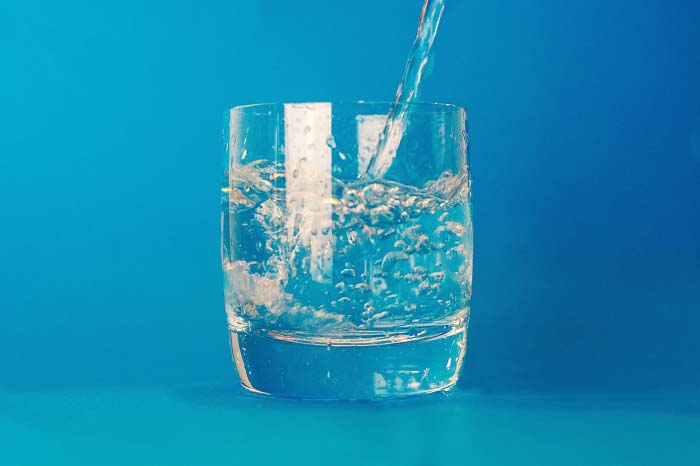
You can measure the levels of organic contaminants in water using two important parameters: COD and BOD. Poor water quality, as shown by high BOD and COD levels, can harm people’s health and aquatic ecosystems. Wastewater treatment procedures must effectively remove BOD and COD to protect public health and the environment.
Here’s everything you should know between BOD and COD
What is COD of water?
Its COD, or chemical oxygen demand, can quantify a compound’s chemical oxidation in water. It measures the overall concentration of oxidizable organic and inorganic compounds in water, usually potassium dichromate with sulfuric acid. You can calculate the dissolved oxygen concentration in ppm or mg/L.
A high chemical oxygen demand reading indicates that pollution in surface water and wastewater bodies varies. A high chemical oxygen demand level is usually a sign that organic contaminants such as agricultural runoff, sewage, industrial wastewater, or other pollutants are present. The organic compounds can reduce the amount of oxygen in water. This isn’t good for aquatic life or the ecosystem as a whole.
Monitoring and controlling chemical oxygen demand levels are crucial when managing the environment and treating wastewater. Treatment facilities can evaluate their operations’ efficiency in eliminating organic contaminants and verify compliance with regulatory standards for water quality. They can do this by measuring chemical oxygen demand concentrations. COD analysis can help optimize treatment procedures and identify pollution sources to prevent further environmental damage.
What is BOD of water?
To determine how much oxygen-rich water aerobics microbes need to decompose organic matter in a specific volume of water at a particular temperature and time, scientists calculate the BOD. Everyday use can indicate the level of organic contamination in water bodies such as wastewater, lakes, and rivers.
Microbes already present in the water begin breaking down organic matter like industrial effluents, agricultural runoff, or sewage as soon as they reach water bodies. The dissolved oxygen content in the water decreases because bacteria use oxygen during this breakdown process. Biological oxygen demand is a measurable indicator of microbial-induced oxygen depletion.
Reduced dissolved oxygen levels may result from organic contamination, as high biological oxygen demand levels indicate. Aquatic organisms are vulnerable to the effects of low oxygen levels. This can reduce biodiversity and, in extreme circumstances, kill fish.
BOD is commonly expressed as BOD₅. It is the quantity of oxygen consumed over a five-day incubation period at a constant temperature (usually 20 degrees Celsius). Typically, we measure it in milligrams of oxygen consumed per liter of water (mg/L) over a specific duration.
The importance of BOD and COD in water
Pros of BOD in water
- Concerns about Public Health
Water bodies facilitate the proliferation of infectious diseases and germs with high BOD levels, which endangers human health. Contaminated water can cause waterborne illnesses like gastroenteritis, typhoid, and cholera, underscoring the significance of controlling organic contamination and maintaining acceptable water quality standards.
- Impact on Aquatic Life
An increase in microbial activity accelerates the breakdown of organic matter in water bodies. This causes the depletion of oxygen in the water. Hypoxia, or low oxygen levels, can harm aquatic creatures like invertebrates and fish. Hypoxia, or the lack of oxygen, can cause fish death and throw off the aquatic food chain.
- Design and Operation of Wastewater Treatment
Biological oxygen demand is essential when planning and running a wastewater treatment facility. Wastewater treatment methods that utilize microbial activity to break down organic contaminants and lower biological oxygen demand levels. This occurs prior to release into receiving water bodies, including oxidation ponds, biological filtration, and activated sludge.
- Regulatory Compliance
Environmental agencies typically regulate biological oxygen demand as part of water quality regulations and standards. Compliance with rules intended for protecting aquatic ecosystems and water quality requires industries and municipalities to monitor and control biological oxygen demand levels in their wastewater discharges.
- Tracking Changes in Water Quality
The differences in water quality over time can be better understood with the help of data derived from long-term monitoring of biological oxygen demand (BOD) levels. Trends in biological oxygen demand (BOD) concentrations can guide management decisions for sustainable water resource management and enhance our understanding of the efficiency of pollution control measures. These can show whether water quality is improving or worsening.
- Signs of water pollution
There are a lot of organic contaminants in the water if the BOD level is high. You can find these contaminants in industrial effluents, agricultural runoff, and sewage, among other places. Monitor the biological oxygen demand levels to gauge the extent of pollution impacting aquatic habitats.
The importance of COD in water
- Monitoring Trends and Changes
You can learn about the changes and variations in water quality over time by monitoring long-term chemical oxygen demand levels. Identifying variations in chemical oxygen demand concentrations can aid in adaptive management tactics, evaluate the efficiency of pollution control measures, and detect emergent contamination sources.
- Evaluation of Water Purity
Policymakers, researchers, and environmental organizations can gauge water quality using COD-level monitoring. It helps us understand how widespread organic pollution is, crucial for protecting public health and aquatic ecosystems.
- Risk to Human Health
Humans may be at risk of harmful chemical oxygen demand (COD) levels in polluted water. Contaminated food can either ingest the contaminants or spread them. Contaminated water from organic contaminants can lead to chronic health issues or waterborne illnesses when in contact with the skin or ingested. These pollutants can contain poisonous chemicals, heavy metals, and pathogens.
- Monitoring Effluent Treatment
Companies that deal with wastewater must meet all regulations before releasing their effluents into bodies of water. The efficiency of wastewater treatment systems can be tracked using chemical oxygen demand analysis. The decrease in chemical oxygen demand levels after treatment indicates that an industry’s effluents are within acceptable limits for disposal.
- Regulatory Compliance
Many countries regulate chemical oxygen demand levels in surface water and wastewater. For the sake of both legal penalties and ecological sustainability, municipalities and industries must adhere to these rules.
- Signs of Organic Pollution
The chemical oxidation demand measures the quantity of oxygen necessary for chemically oxidizing organic compounds in water into inorganic ones that are simpler. Agricultural runoff, industrial effluents, and sewage are examples of organic contaminants that can cause water quality issues when COD levels are high. These contaminants lower water quality and could harm humans if they were to drink them and hurt aquatic life.
- Impact on Aquatic Life
Elevated chemical oxygen demand levels, which indicate high amounts of organic pollution, can decrease dissolved oxygen levels in water. Invertebrates and fish, among other aquatic creatures, are particularly vulnerable to the effects of anoxia and hypoxia. This can result in oxygen loss and cause death. A better understanding of the possible effects of contamination on aquatic ecosystems, and better direction of conservation efforts with the help of COD monitoring.
 Which is higher, BOD or COD?
Which is higher, BOD or COD?
There are two ways to quantify the amount of oxygen that will help decompose organic water substances: COD and BOD. The two water quality characteristics they stand for are distinct, though.
The biological oxygen demand (BOD) measures how much oxygen microbes have taken in during a set period of time, usually 5 days, as they break down organic materials in aerobic water (rich in oxygen). BOD shows the presence of biodegradable organic material levels in the water.
Conversely, COD quantifies the quantity of oxygen necessary for chemically oxidizing all water’s organic and inorganic matter. It cannot differentiate between biodegradable organic materials and those that are not. Chemical oxygen demand testing typically takes little more than a couple of hours to do.
The chemical oxygen demand (COD) is typically higher than the biological oxygen demand (BOD). This is because it incorporates both biodegradable and non-biodegradable organic matter and certain inorganic substances. While biological oxygen demand (BOD) gauges water contamination generally, chemical oxygen demand (COD) assesses organic load and the possibility of oxygen reduction due to the breakdown of organic matter.
The short answer is that COD is usually higher than BOD.
What causes high BOD and COD in wastewater?
Several things can lead to wastewater having high BOD and COD levels, such as:
pH:
The solubility rate and breakdown of organic compounds impact the levels of BOD and COD in wastewater.
Waste from industries
High amounts of organic compounds in wastewater contribute to heightened levels of BOD and COD. Industries like textile dyeing, pulp and paper manufacturing, food processing, and chemical production can release it.
Runoff from storms
Stormwater runoff from cities can increase BOD and COD levels in water sources by transporting organic contaminants from parking lots and roads, including organic debris, lawn fertilizers, grease, and oil.
Agricultural runoff
Agricultural wastewater can increase the levels of BOD and COD. This is because organic materials like pesticides, fertilizers, and animal waste are present in this type of wastewater.
Insufficient treatment
When wastewater treatment processes are insufficient, successful, or efficient, organic contaminants may still be present in the treated effluent. This leads to high BOD and COD levels when released into water bodies.
Municipal sewage
If the levels of BOD and COD are high, you’ll find signs of organic matter contamination in domestic wastewater from food sewage systems, commercial businesses, and households.
Temperature
The heating process can enhance higher biological oxygen demand and microbial activity levels in wastewater.
Organic pollutants
Typical organic compounds in wastewater from homes, agriculture, and industries include complex organic molecules, fats, sugars, and proteins. Excessive amounts of BOD and COD can be due to these compounds.
Conclusion
Implementing best practices in urban stormwater management and agriculture can help reduce runoff contamination and optimize industrial processes. This will help mitigate organic pollutant discharges and control and minimize levels of BOD and COD in wastewater.
